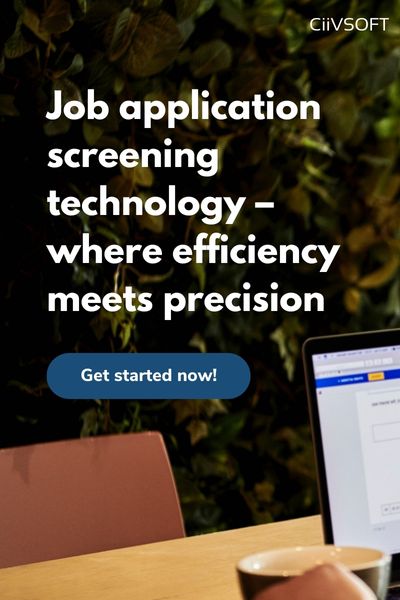In today’s fast-paced and ever-changing business world, recruitment has evolved dramatically. Gone are the days of simply posting a job advertisement and waiting for resumes to flood in. Modern recruitment is a multifaceted process that requires employers and hiring managers to adapt to new technologies, changing workforce dynamics, and an increasingly competitive job market. In this blog, we will explore the key trends and strategies that define modern recruitment and how employers can navigate the modern hiring landscape.
1. Leveraging Technology
Technology has revolutionized the recruitment process, making it faster, more efficient, and more effective. From online job boards to applicant tracking systems (ATS) and artificial intelligence (AI)-driven recruitment tools, employers now have a plethora of tools at their disposal to streamline their hiring process.
For example, ATS systems can help manage job postings, track applications, and automate screening, saving time and effort. AI-powered tools can analyze resumes and identify the best-fit candidates based on keywords, skills, and experience. Additionally, social media platforms have become invaluable for sourcing and networking, allowing employers to reach a wider talent pool and build their employer brand.
2. Candidate Experience
In the modern era, candidate experience has become a top priority for employers. Job seekers now have more choices than ever, and a positive candidate experience can make or break an employer’s reputation. Employers need to focus on creating a seamless and engaging experience for candidates throughout the recruitment process. This includes optimizing the online application process, providing timely feedback, and offering a personalized touch.
Employers also need to ensure that their employer brand is consistent across all touchpoints, including their website, social media, and job postings, to attract top talent and retain their interest.
3. Remote Work and Flexible Work Arrangements
The COVID-19 pandemic has accelerated the adoption of remote work and flexible work arrangements. Many organizations have shifted to remote work as a long-term strategy, and this has significant implications for recruitment. Employers now have access to a larger talent pool as geography is no longer a constraint.
They can tap into remote workers from different parts of the world and benefit from diverse perspectives and skills. Employers also need to adapt their recruitment strategies to assess a candidate’s ability to work remotely, including their communication skills, self-motivation, and time management. Additionally, flexible work arrangements such as flextime, compressed workweeks, and job sharing are gaining popularity, and employers need to consider these options in their recruitment process to attract top talent.
4. Diversity, Equity, and Inclusion (DEI)
DEI has become a critical aspect of modern recruitment. Employers are recognizing the importance of building diverse and inclusive workforces that reflect the communities they serve. Hiring for diversity goes beyond meeting quotas; it’s about creating an inclusive culture where all employees feel valued and included.
Employers need to implement DEI strategies in their recruitment process, including diverse job postings, unbiased screening and interviewing techniques, and inclusive language. They also need to address unconscious bias in the hiring process and create opportunities for underrepresented groups. Companies that prioritize DEI in their recruitment efforts are more likely to attract top talent and create a more innovative and successful workplace.
5. Skills-based Hiring
Traditional resumes and job titles are no longer sufficient indicators of a candidate’s potential. Employers are increasingly focusing on skills-based hiring, where they assess a candidate’s skills, abilities, and potential rather than solely relying on their work experience or educational qualifications.
Skills-based hiring allows employers to tap into non-traditional talent pools and identify candidates who may have relevant skills but lack the conventional credentials. Employers can use skills assessments, simulations, and practical tests to evaluate a candidate’s capabilities and potential to excel in the role. This approach can help employers identify hidden gems and diversify their workforce.
6. Employer Branding
In the modern recruitment landscape, a strong employer brand is crucial to attract and retain top talent. Employer branding refers to how an organization is perceived as an employer by job seekers and current employees. A well-defined employer brand helps in creating a positive image and reputation, which can differentiate an organization from its competitors. It includes elements such as company culture, values, mission, employee testimonials, and benefits.
Employers need to invest in their employer brand by showcasing their unique value proposition and creating a compelling story that resonates with potential candidates. A strong employer brand not only attracts top talent but also leads to higher employee engagement and retention.
7. Data-Driven Recruitment
Data has become a valuable asset in modern recruitment. Employers can leverage data to gain insights into their recruitment process, measure the effectiveness of their strategies, and make data-driven decisions. Data can help identify trends, patterns, and areas of improvement in the recruitment process. Employers can use data analytics to track key performance indicators (KPIs) such as time-to-fill, cost-per-hire, and quality of hire, to optimize their recruitment strategies.
Data can also help in identifying the most effective sourcing channels, improving candidate engagement, and reducing bias in the hiring process. By leveraging data, employers can make informed decisions and continuously improve their recruitment efforts.
8. Soft Skills and Cultural Fit
While technical skills are important, soft skills and cultural fit are gaining more prominence in modern recruitment. Soft skills such as communication, collaboration, adaptability, and emotional intelligence are critical for success in today’s dynamic work environment. Employers are placing a higher emphasis on assessing a candidate’s soft skills and cultural fit with the organization’s values and goals. This includes evaluating a candidate’s interpersonal skills, attitude, and alignment with the company’s culture.
Employers need to design their recruitment process to include assessments and interviews that focus on evaluating soft skills and cultural fit to ensure that the candidates they hire are the right fit for their organization.
Modern recruitment driving success
In conclusion, modern recruitment has evolved to be a dynamic and multifaceted process that requires employers to adapt to changing trends and strategies. Technology has revolutionized the recruitment process, candidate experience has become a priority, remote work and flexible work arrangements have gained prominence, diversity, equity, and inclusion have become critical, skills-based hiring is on the rise, employer branding is crucial, data-driven recruitment is gaining momentum, and soft skills and cultural fit are given more importance.
Employers need to stay updated with the latest trends and adopt innovative strategies to attract and retain top talent in the modern hiring landscape. By leveraging technology, prioritizing candidate experience, embracing diversity and inclusion, focusing on skills-based hiring, building a strong employer brand, using data-driven insights, and evaluating soft skills and cultural fit, employers can navigate the modern recruitment landscape successfully and build a talented and diverse workforce for their organization’s success.








